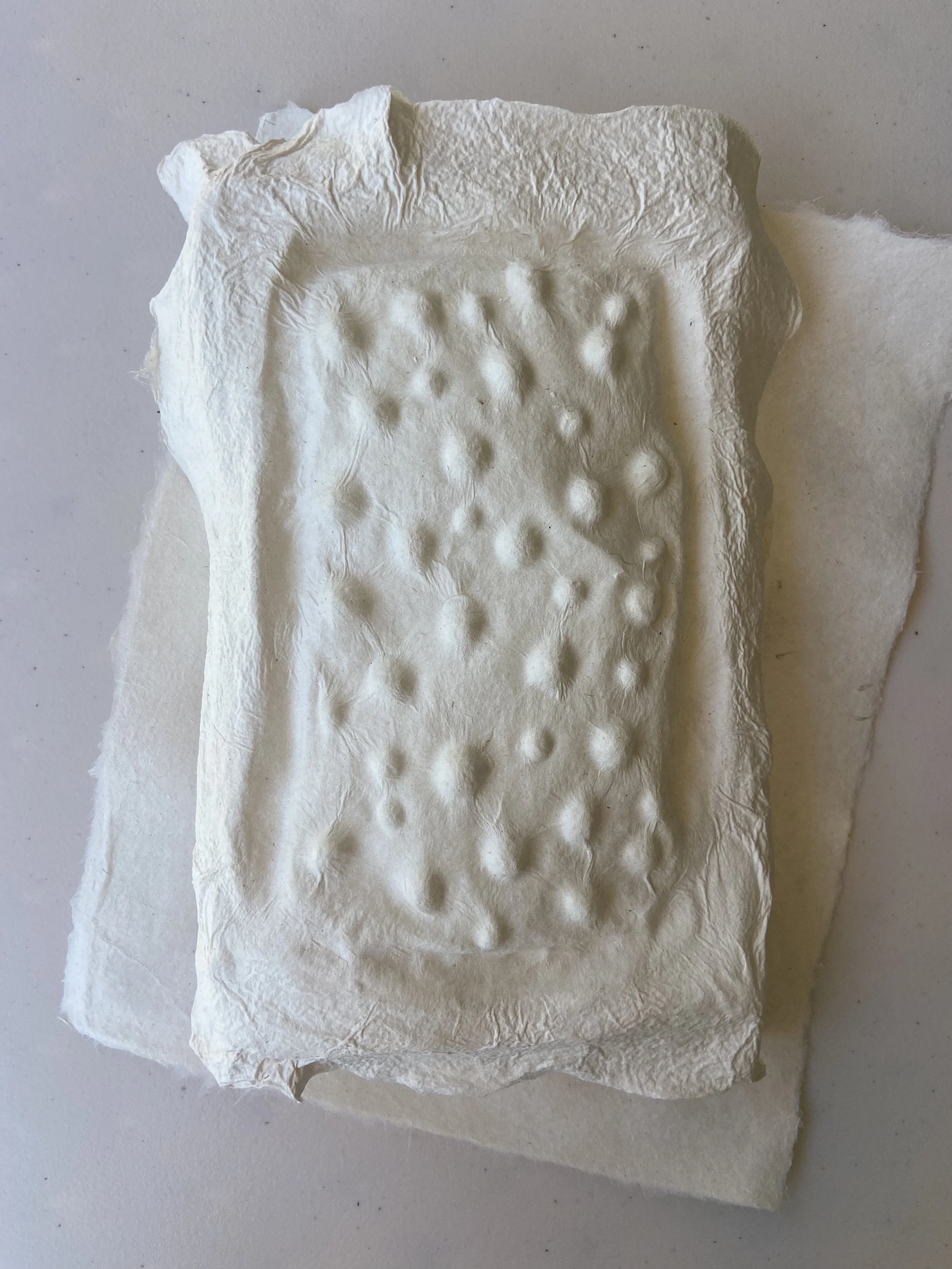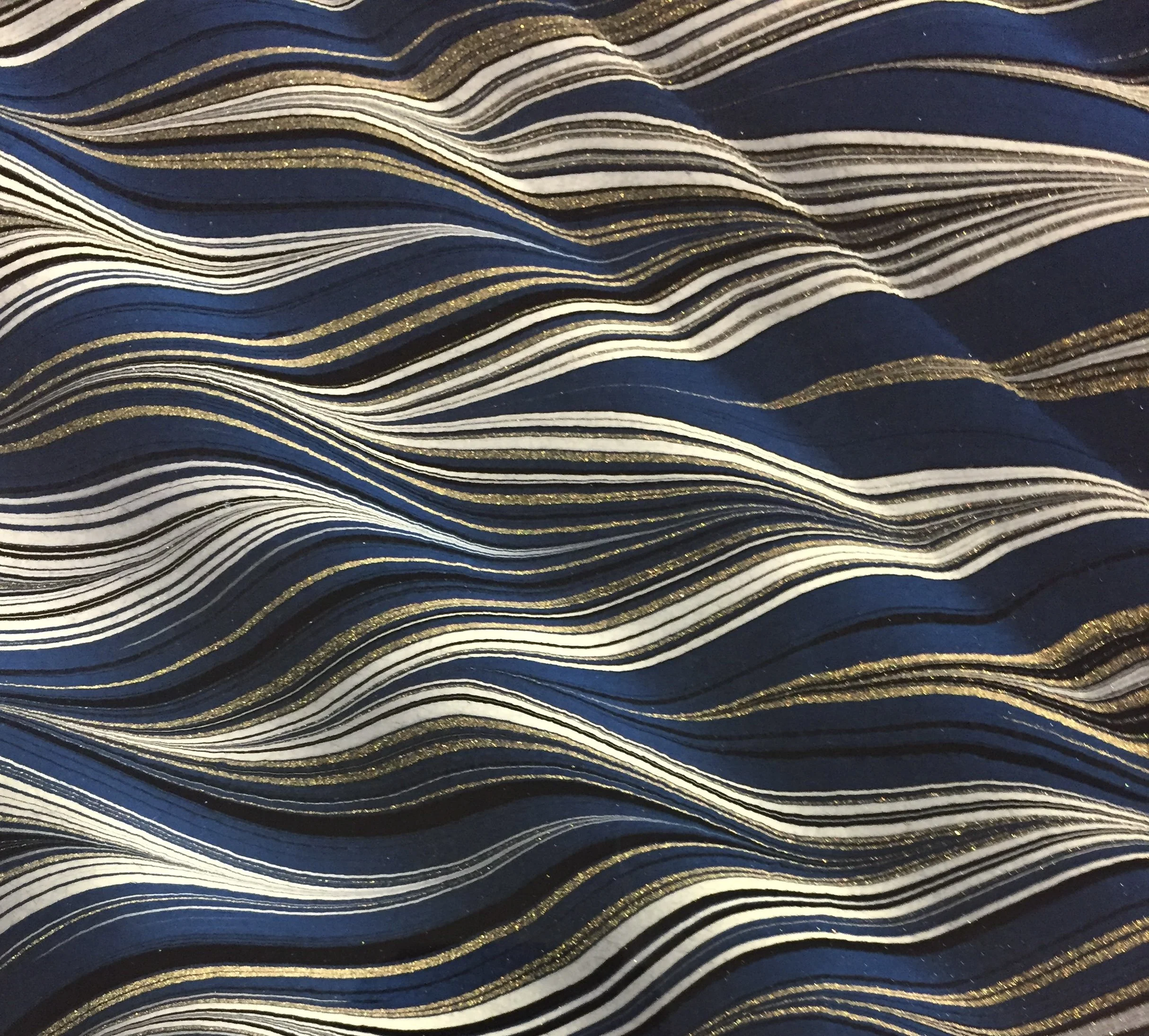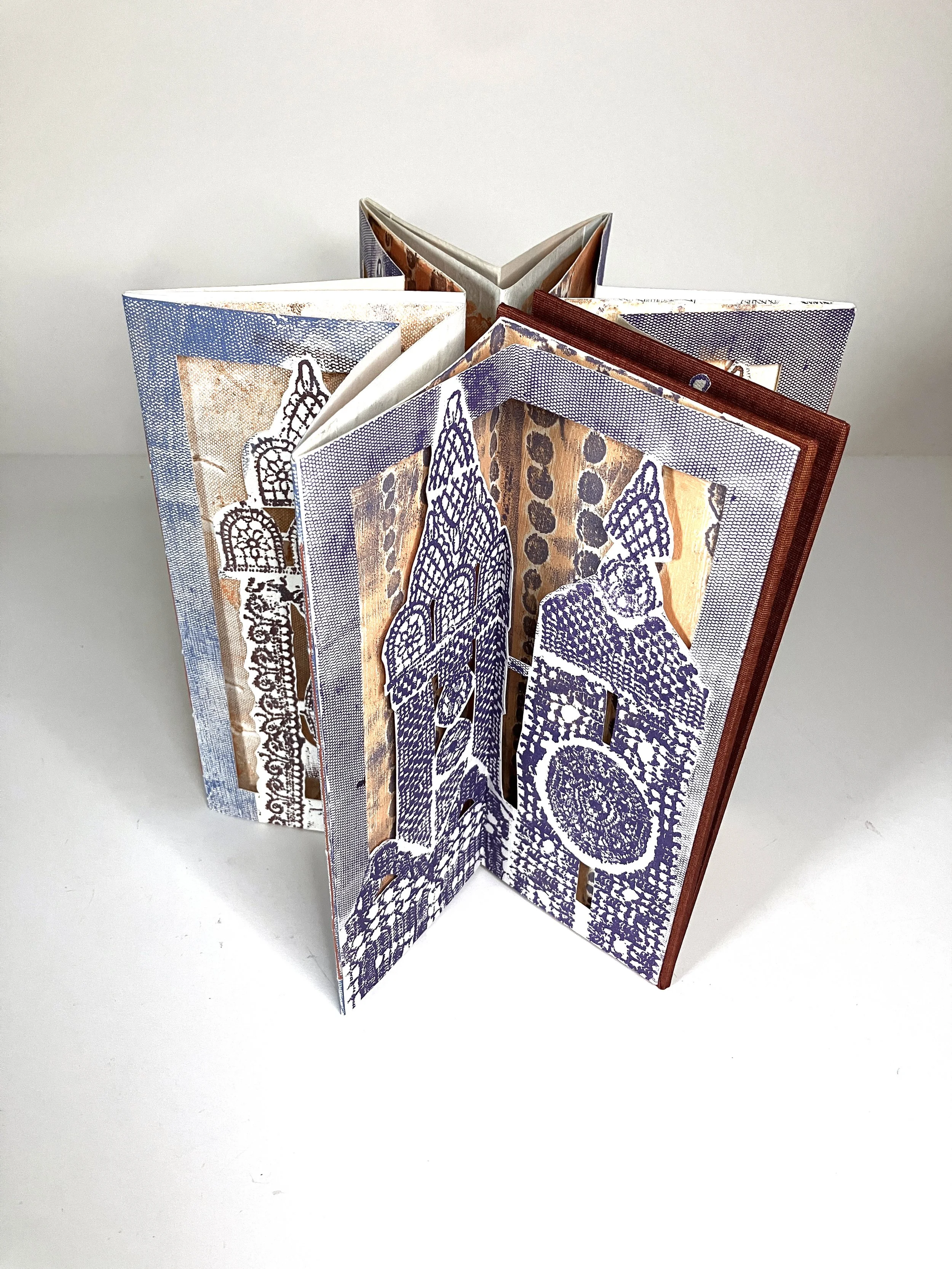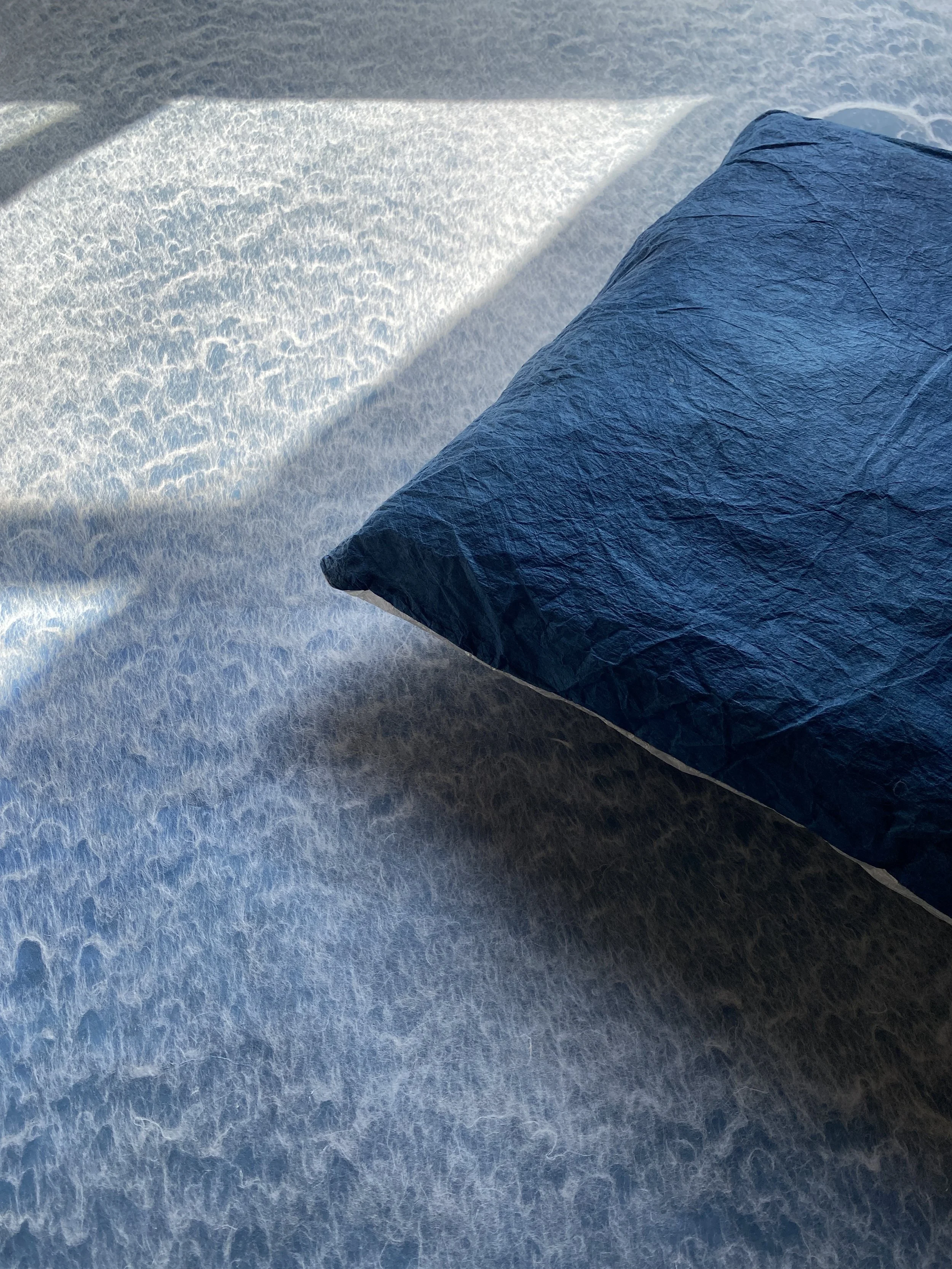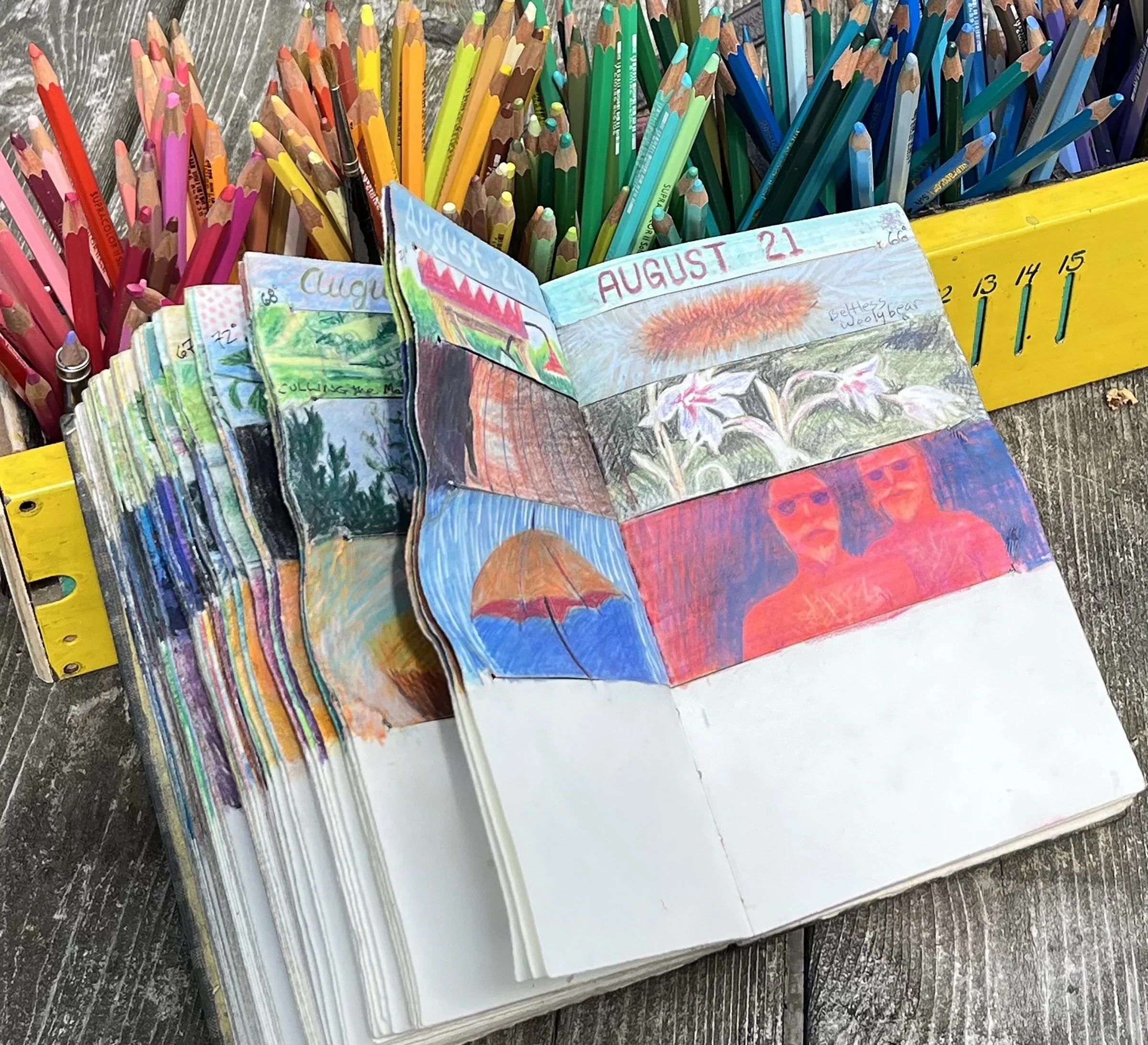
PBI 2026 Classes
PAPER AND BOOK INTENSIVE 2026
1
SESSION 1
-
Paper and clay are both primal earthen materials. The human capacity for transforming plants and mud into creative works is extraordinary. Heat, water, force, time, and new ideas all play a part in this process of change and possibility. How might clay act like paper and how might paper act like clay?
In this workshop we will explore the relationship between paper and clay by creating similar sculptural forms in each medium. We will consider how these materials may speak to our own memory, ideas of delicacy, strength and the larger ecological world. In clay, we will focus on hand building with the pinch and slab techniques, joining shapes, and embedding texture. In paper, we will use pulp and wet-pressed sheets to assume the shapes of built or found armatures. We will also learn how to make a one-part mold, allowing for transference of a surface formed with clay onto paper. Participants will be encouraged to explore each medium’s unique qualities, similarities and differences through their own curiosity and means of expression.
-
Jenna Bonistalli is an artist and educator. Her creative thought explores ecological time, attention and phenomena. She works with dimensional materials — paper, clay, thread, light and sound. Jenna earned a BA from New York University’s Gallatin School, an MSEd from Bank Street College of Education and an MFA in sculpture at the University of Iowa, with a focus in hand papermaking at the UI Center for the Book. She has been an artist-in-residence at Iowa Lakeside Lab, the Hambidge Center for Creative Arts and Sciences and the Sitka Center for Art and Ecology. Jenna lives in Los Angeles, CA and is a lecturer in Studio Arts at Loyola Marymount University. She is endlessly inspired and fascinated by all things plants and paper.
2
-
Sometimes a book you’re working on requires a drawing; sometimes a drawing you’ve done inspires a book. This class is all about creating (or reviving!) a regular drawing practice to keep visual ideas flowing. All the bookmaking techniques in the world won’t help if you’re short on ideas for content. When a story or a theme calls you, you want to be off and running. Built out of decades of teaching drawing to book artists, this course is an intensive built out of the best of those classes—to strengthen a personal drawing practice that makes visual thinking second nature.
Each day will be a different excursion into drawing experiences designed to ratchet up visual thinking. We'll include a day of visual thinking focusing on description and point of view; a day of atmosphere beginning with a mood, a day of color to meaning, and a day of narrative—drawings that beg for a before and an after, until suddenly there is a story. Some of these will challenge—you’ll get through it! Others you’ll take to like a bone folder to a crease. We’ll use pencil and ink and more, housing these explorations in different book forms designed to propel your ideas—both during our class time and long after.
We’ll provide most of what you need, but do come with your favorite fountain pen or other fine ink pen, and your favorite color medium, and any other drawing media you’d like to give more attention to.
-
Ken Leslie paints and writes on a variety of themes—including our place in the Universe, a layman’s theory of relativity, and the battle between nature and technology— but he is most well-known for his paintings and artist’s books exploring the light and dark on and above the Arctic Circle. These projects have taken him across the circumpolar arctic, including Alaska, Baffin Island, Iceland, Scandinavia, Svalbard and most recently to several sites across northwest Greenland—working at each site in both winter and summer. Leslie taught painting, drawing and bookmaking at Vermont State University in Johnson, where he chaired the BFA and MFA programs for decades. He has received numerous honors for his work, including visual artist fellowships from the National Endowment for the Arts, the Vermont Arts Council, the Vermont Community Foundation and the American Scandinavian Foundation. Originally from New York, Leslie has lived in northern Vermont since 1984, with his wife, Ruby Leslie—a nationally recognized weaver.
3
-
In this workshop participants will construct two boarded bindings, the first one being a cutaway of the structure while the second (or potentially more) can be more personalized. Boarded bindings are characterized by their paper covering, despite using the same binder’s board used in bindings covered in leather. Often referred to as “temporary” bindings on texts that would be rebound after purchase, boarded bindings were a less expensive binding method, producing a more affordable product with the potential of reaching a wider audience. We will look at examples of American and English bindings from circa 1780-1830 to see the similarities and differences between the two binding traditions. Contemporary binding manuals will be examined to find out how boarded bindings differed from leather bindings made during the same time period and to help determine if this binding type really should be considered temporary or was as good as it needed to be. All materials will be provided, but participants can bring their own decorated paper to use to cover their bindings.
-
Todd Pattison is Conservator for American Ancestors, Vice-President of the Guild of Book Workers and a Fellow in the American Institute for Conservation (AIC). He first became fascinated with bookbinding in the Boy Scouts while completing his Bookbinding Merit Badge and has taught workshops on both bookbinding and book conservation. Todd researches American bookbinding with a focus on book structure, trade bindings and industrial change in binderies, and teaches a one-week course on the History of American Publishers’ Bindings at Rare Book School at University of Virginia
4
-
Paper marbling, a craft dating back to the 11th & 12th c. in Asia and the 15th century in East Asia, is unique among crafts using paper and paint. ‘Ebru’ or Turkish marbling made its way to Europe and the Americas over the succeeding centuries. In ebru marbling, colors are floated on a liquid bath and combed into intricate patterns. Paper is gently applied to the bath surface, and the resulting print can be used for any application where decorative paper is desired. Using modern paints, materials, and techniques, students will thoroughly explore marbling techniques and designs. Up to twenty-five traditional patterns will be covered, in addition to experimenting with flower forms typically found in ebru. Participants will come away with a complete understanding of all aspects of marbling along with a large portfolio of papers to use for reference and projects.
-
Even after nearly 45 years of marbling, Steve Pittelkow still finds it both stimulating and challenging. Over the years he has refined his methods and materials to ensure a fulfilling class experience for students. Steve's papers are distinguished by bright colors and precise designs and they are featured in books and museum collections and are used by artists in many media. He has taught extensively across the US and Europe, including The Wells College Summer Institute, Penland School of Crafts, The Morgan Conservatory, The Metropolitan Museum, The Center for Book Arts, Asheville BookWorks, University of the Arts and many other art centers.
5
-
Through collagraph printing and designing carousel books we will explore the intersection of printmaking and book arts. Collagraph printing involves using a variety of materials with rich surface textures such as lace, paper, burlap, tape, and bubble wrap to create a printing block. These materials are adhered to a sturdy base, sealed for durability, and inked using relief printing techniques. The resulting block will be used to print multiple impressions, ideal for creating a series of pages—pages that will be transformed into carousel book structures—sculptural, circular forms that reveal layered visual narratives. Through cutting, folding and assembling pages, we will create depth and dimensionality, turning flat prints into three-dimensional scenes in a carousel book format.
-
Tatiana Potts is a Slovak-born printmaker and bookmaker based in Tennessee, USA. Her work blends images, artist books, and paper installations into immersive, architectural forms of world-making. Drawing from her experiences living, traveling, and studying across Europe and the United States, she constructs composite memories that reflect shifting notions of identity, language, and place.
As a person from a country that no longer exists, Potts navigates the complexities of belonging by creating Tajtania—a fictional, phenomenological space named after her own identity. Her folded paper structures act as grammatical building blocks, forming adaptable environments that respond to new spaces and experiences.
Potts uses techniques such as lithography, screen print, relief, and intaglio to create prints that become the foundation for her sculptural books. Her work explores the fluid nature of culture, language, geography, and architecture.
She holds a BFA from UNC Asheville and an MFA in printmaking from the University of Tennessee, Knoxville. Her work has been exhibited internationally and is held in collections including the Victoria and Albert Museum (UK) and the National Taiwan Museum of Fine Arts. She currently teaches printmaking and book arts at Western Carolina University.
IG: cityoftajtania www.tatianapotts.com
6
SESSION 2
-
Archival or stationery bindings with laced overbands were a common binding for blank books used for daily journals, account books, and other records keeping books throughout Europe from the 14th through 18th centuries, likely originating in Italy. These books were used by medieval merchants and businessmen and had to withstand heavy daily use to record the day’s business dealings. This class will look at images of historical examples from across the Italian peninsula and cover stationary binding terminology and structural binding variations based on historical examples found in Italian archives.
We will construct two versions of the most common style of tacketed stationery bindings: a limp vellum binding with fore-edge flap, spine tackets, and laced overbands. One bookblock will be sewn unsupported and attached to the cover using a saltire tacket. The second textblock will be sewn over split leather thongs, which will lace through the front cover and then secured under the overbands. The leather or alum tawed overbands strengthen the binding attachment, and are secured to the cover with decorative alum tawed lacings.
In addition, we will create a variety of lacing pattern sample cards and explore different fastening types: including ties, loop and toggle, and buckle and strap. We will also experiment with coloring alum tawed skin with historical natural dyes. While this class will focus on creating historical facsimiles, students can choose to adapt these forms and create their own artistic versions.
-
Katherine Beaty is a rare book conservator for special collections at the Weissman Preservation Center, Harvard Library special collections conservation laboratory. She has a special interest in parchment, non-western bindings, and investigating historical book structures. Before coming to Harvard in 2008, Katherine trained at the Folger Shakespeare Library, Library of Congress, New York Academy of Medicine, Harry Ransom Center, and worked at Duke University Library and the Smithsonian. Katherine’s first experience with books was with Don Etherington in Greensboro, NC, who hired her straight out of art school with no experience in bookbinding. Katherine went on to earn her M.A. in book and paper conservation from the Buffalo State College's Garman Art Conservation department and is a Professional Associate of the American Institute for Conservation. Katherine was awarded the Suzanne Deal Booth Rome Prize in 2024 and has spent the year researching Italian stationery bookbindings in Italy.
7
-
Over centuries, papermaking techniques, tools, and materials have moved and morphed, taking on new meaning as they adapt to new cultural and environmental conditions. This course draws on papermaking’s long history of migration—where a tool from Europe may end up in a Japanese studio, and a fiber originally grown in East Asia is found growing in Berlin. These crossings and remixes remind us that papermaking, like other art forms, is borderless and malleable.
We’ll explore papermaking’s worldwide resilience by combining fibers and techniques from a multiplicity of practices. Participants will make decorative kozo sheets using “western” moulds and deckles, incorporate recycled textiles into layered pulp artworks, and paint with bast fibers and inclusions. We will be makers in a fluid space, seeking ways to express the liminal thresholds between tradition and experimentation, surface and depth, fragility and strength.
-
Nicholas Cladis is an artist working in Iowa City, IA and a 2025-26 Iowa Artist Fellow. His work incorporates site-responsive / experimental installation, community engagement, and an attention to—and appreciation of—craft in a contemporary fine arts context. To Nicholas, the empowering, uplifting, and transformational act of making paper by hand generates essential connective points to history (time), community (people), and ecology (place). A former Japan Foundation Ishibashi Fellow and resident of Japan, Nicholas maintains an active relationship with the Echizen papermaking region in Fukui Prefecture. This relationship has inspired an array of cross-cultural arts exchanges, exhibitions, and workshops.
8
-
The highlands of Ethiopia are home to one of the world’s oldest surviving bookbinding traditions. For more than a thousand years, scribes have produced bound parchment manuscripts using the same historical methods passed down through countless generations, and the enduring form of the Ethiopian codex allows us to glimpse the emergence of the craft during some of its earliest activity. Although relatively simple in structure, the hundreds of thousands of surviving bindings—largely still in active use today—reveal nuances and variations shaped by centuries of a hands-on transmission of knowledge and the practices of individual scribes across centuries.
In this workshop, we will look closely at the materials, techniques, and culture behind the Ethiopian bookbinding tradition. Through intensive hands-on work and short presentations on structure, history, and cultural context, we will locate Ethiopian bookbinding within the broader technical and cultural histories of the book. At the same time, we will strive to center the tradition on its own terms while emphasizing the integrity of its distinct practices, vocabulary, and aesthetics.
Students will create two complete models based on historical examples: one with bare wooden boards and another in full leather with textile board linings, leather endbands, and blind-tooled decoration based on common motifs using traditional tool designs. Participants will also have the opportunity to make a textile over-cover and leather satchel, commonly used for protection, storage, and transport of books. Additional demonstrations will include thread-making from sinew and parchment, and if time allows, students may explore structural variations through smaller models.
-
Bill Hanscom is a conservation professional, educator, and author. Since 2009, they have worked as a conservation technician for special collections at Harvard Library’s Weissman Preservation Center. They taught undergraduate courses in bookbinding, letterpress printing, book art theory, and independent publishing for the Book Arts BFA program at Montserrat College of Art from 2010 to 2023, serving as its coordinator for seven years. For more than a decade, Bill has regularly taught workshops on historical bookbinding structures and other book arts and preservation topics for North Bennet Street School, the Guild of Bookworkers, and other organizations. Their experience in higher education began in mechanical engineering and commercial printing before shifting to the arts, studying Graphic Design at Montserrat College of Art (BFA, 2003) and Book Arts & Printmaking at The University of the Arts (MFA, 2008). Bill maintains an independent research and writing practice focused on historical bookbinding structures and methods, and their first book, Ethiopian Bookbinding Tradition, will be published by The Legacy Press in early 2026. Bill lives in Rockport, Massachusetts with their wife and three children.
9
-
Using both a Vandercook and etching presses, we will explore and experiment with color, texture, and design elements in a tactile, direct way as a method for creating textured, atmospheric variable editions. We will make a series of prints using found materials, respond to the landscape around us, and work with layered, transparent fields of color, using monoprints, pressure prints, rubbings, and more. We will combine our techniques, to create rich, layered landscapes of ink. We will push the limits of what an “edition” can mean, and think about ways prints talk to each other in the context of a book. We will add text, or not, using both traditional hand-set metal type and other methods, and think about the ways that text interacts with our imagery. We will use our time together as a laboratory for experimentation, combining the planned, intentional, and traditional practice of letterpress with improvisation and unconventional approaches.
-
Sarah Nicholls is an artist, printmaker, educator, and writer whose work combines language, image, visual narrative, and time. She publishes an ongoing series of letterpress pamphlets on urban environments, climate change, and urban history, and organizes a range of participatory walks and programs around the series. Her limited edition artist books are in the collections of the Victoria & Albert Museum, the Brooklyn Museum, Columbia University, and Stanford, among others. Her work has received support from the Lower Manhattan Cultural Council, the Brooklyn Arts Council, and the Puffin Foundation, and she has participated in residencies at BRIC in Downtown Brooklyn, the Chicago Center for Book and Paper Arts, and Guttenberg Arts in NJ. She teaches letterpress and book arts at Pratt Institute, Parsons School of Design, as well as the Center for Book Arts.
10
-
In this workshop we will learn how to construct the Continuously Convoluting Carousel, a book structure originally designed while pursuing the idea for a book that can open in multiple directions--considering structure, movement, and fold in that pursuit. Using a Jacob’s ladder hinging technique, this is a multiplex carousel binding that can be inverted on itself indefinitely, revealing a sequence of four different hidden openings or displays, three of which are concealed at any given time. We will work on a number of versions of the structure, exploring variations in size, form, materials, and binding methods. Like the Jacob’s Ladder, the Continuously Convoluting Carousel employs the double action hinges that gave the toy its characteristically illusive motion.
-
Graham Patten is the senior conservator at the Boston Athenaeum. He previously served as an Assistant Book Conservator at the Northeast Document Conservation Center (NEDCC), and Conservation Fellow at Northwestern University Library. In his artistic pursuits, Graham often focuses on dynamic sculptural and mechanical elements, and enjoys merging these features with innovative book structures. He is a member of the Guild of Bookworkers, and a Professional Associate of the American Institute for Conservation.
